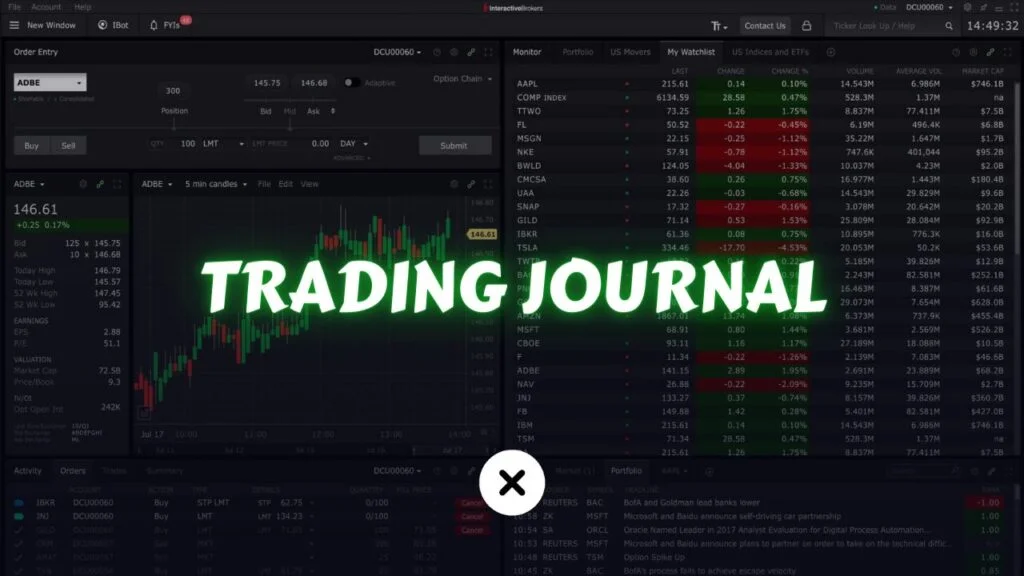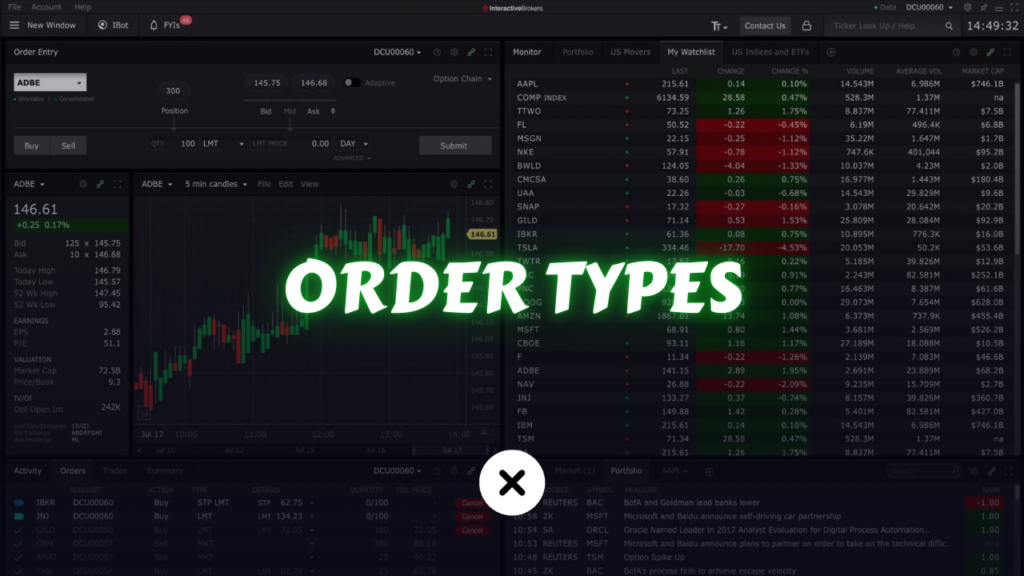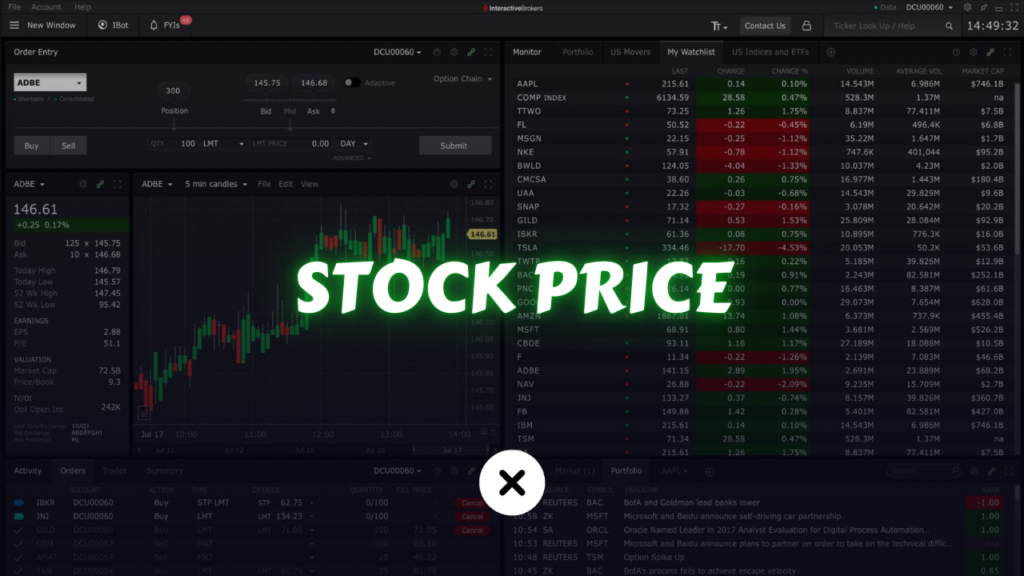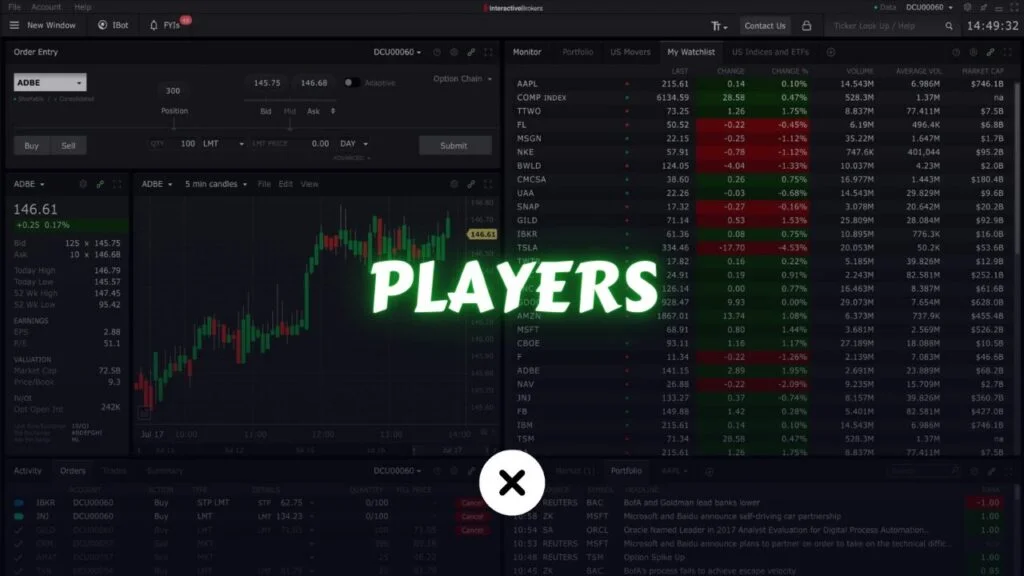Trading can be as exhilarating as it is challenging. Whether you are an aspiring day trader, a swing trader, or a long-term investor, you will face complex market conditions that can test your emotional discipline, strategy adherence, and risk management skills. One of the most powerful tools to navigate these challenges and continually improve your performance is a trading journal.
A well-maintained trading journal goes far beyond just keeping a record of your trades. It becomes a repository of insights into your trading psychology, your risk management approach, and the strengths and weaknesses of your strategies. In this comprehensive guide, we will cover everything you need to know about trading journals what they are, why they matter, how to create one, how to analyze your data, and how to leverage it for lasting success in the markets.
By the end of this article, you will understand why every serious trader—whether beginner or professional—needs a trading journal, and how you can use one to refine your strategies, manage emotions, and ultimately trade more profitably.
What Is a Trading Journal?
A trading journal is a detailed record of your trading activity, capturing every aspect of each trade you take. It typically includes the date and time of the trade, the financial instrument involved, the entry and exit prices, the position size, and the outcome (profit or loss). However, a high-quality journal goes beyond these basic data points. It also encompasses your thought process, the strategy you employed, market conditions at the time of the trade, your emotional state, and other contextual clues that can help you understand why you took a trade and how it performed under specific circumstances.
Key Points
- A trading journal is not just a log of numbers; it is a qualitative and quantitative tool.
- It helps in objectively measuring performance and evaluating the effectiveness of trading strategies.
- It captures your psychological state, which is crucial in financial markets where emotions can strongly influence decision-making.
Why You Need a Trading Journal
A trading journal is your personal roadmap to continuous improvement. Many traders, especially beginners, overlook the importance of meticulous record-keeping, focusing instead on the excitement of market fluctuations. Yet, without proper documentation and review, it is incredibly challenging to pinpoint the specific reasons behind a string of losses or identify which strategies are consistently profitable. Below are some of the core benefits of maintaining a trading journal:
- Accountability
Logging every trade instills a sense of responsibility and discipline. You become accountable for each decision you make and the risks you take. - Performance Evaluation
By keeping a record, you can evaluate your performance over time. You see precisely how different strategies, market conditions, or emotional states impact your bottom line. - Pattern Recognition
Patterns in your successes and failures often become clear only after reviewing multiple trades. A trading journal helps you identify these patterns so you can focus on repeating what works and avoiding what doesn’t. - Psychological Insight
Emotions—fear, greed, impatience—can dramatically affect trading decisions. By recording your emotional state, you can spot psychological triggers that lead to poor choices. - Strategy Optimization
A trading journal allows you to test and refine strategies. If a strategy is not working, the journal will provide the data and context to help you understand why. - Risk Management
You can track whether you are adhering to your risk management rules. If your maximum loss for a day is 2% of your account and you keep losing 5% on trades, the journal will highlight these oversights. - Long-Term Consistency
Ultimately, consistent success in trading is about discipline and process, not one-off big wins. A journal helps build that consistent process.
By giving you a mirror that reflects your trading habits and decisions, a trading journal is arguably one of the most underrated yet essential tools in any trader’s arsenal.
Key Components of a Trading Journal

A trading journal can have as many or as few sections as you want, but to extract maximum value, it is best to include certain core components. Below are the essential elements you should incorporate in your journal:
1. Trade Details
This section captures the basic transactional information of each trade:
- Date and time of entry (and exit)
- Instrument traded (e.g., stock ticker, currency pair, crypto asset)
- Position size (number of shares, lots, contracts)
- Entry price and exit price
- Stop-loss and take-profit levels (if any)
- Profit or loss (in terms of both pips/points and dollars/percentages)
2. Reasoning and Strategy
Document the primary reason for initiating the trade:
- Was it based on technical analysis (e.g., breakout from a support/resistance level, moving average crossover)?
- Did you rely on fundamental analysis (e.g., earnings reports, economic news releases)?
- Was it part of a grid trading strategy, a mean reversion strategy, or another systematic approach?
By clarifying your trading rationale, you can later evaluate if your reasoning was sound or if it was driven by impulses and emotions.
3. Emotional and Psychological Notes
Include a section detailing your state of mind:
- Were you anxious, confident, or revenge trading to recover losses?
- Did the markets feel uncertain and did that impact your decision-making?
- Were you overexposed or comfortable with your position size?
Such notes provide context that purely numerical data often fails to capture. Emotional discipline is a critical part of trading success, and journaling your psychology can offer insights you might otherwise overlook.
4. Chart Screenshots or Market Context
If you can, take screenshots of the chart at the time of entry and exit. Mark your planned entry, stop-loss, and take-profit levels. It’s also helpful to note:
- Overall market conditions (bullish, bearish, sideways)
- Economic events (interest rate announcements, major company earnings, geopolitical news)
Visual cues can significantly aid in later analysis, helping you see if you timed your entries or exits well relative to price action.
5. Performance Metrics and Statistics
Over time, you’ll want to track metrics such as:
- Win rate: percentage of trades that are profitable
- Risk-reward ratio: average reward vs. average risk
- Drawdowns: largest drop from a peak in your account
- Expectancy: average amount you can expect to win (or lose) per trade
These metrics give you a bird’s-eye view of how your trading is progressing overall.
Types of Trading Journals

There are various ways to keep a trading journal, each with its advantages and disadvantages. The best option for you might depend on your personal preferences, trading style, and tech-savviness.
1. Physical Journals
- Advantages: Tangible, great for those who retain information better by physically writing things down. Easy to jot down emotional or psychological notes quickly without distractions.
- Disadvantages: Limited in terms of computational analysis. Harder to store screenshots or track performance metrics over a large dataset.
2. Spreadsheets
- Advantages: Flexible, can be customized to automatically calculate metrics like win rate, average win/loss, and drawdowns using spreadsheet formulas. Easy to keep track of multiple columns (strategy, emotional notes, etc.).
- Disadvantages: Charts, screenshots, and in-depth notes might be difficult to integrate. Requires some knowledge of spreadsheet software (e.g., Excel or Google Sheets).
3. Dedicated Software and Apps
- Advantages: Purpose-built with features like chart imports, automatic performance metrics, and integration with trading platforms. Allows you to upload screenshots and keeps everything in one place.
- Disadvantages: May have subscription fees or one-time costs. You have to learn how to use the software, which might have a learning curve.
The best approach is often to start simple. If you’re new to journaling, begin with a spreadsheet or a notebook. As your trading matures, consider migrating to dedicated software for more advanced analytics.
How to Create a Trading Journal Step by Step

Creating a trading journal is not complicated, but doing it consistently is where most traders falter. Below is a step-by-step guide to help you get started and maintain the habit:
- Choose Your Medium
Decide if you want to start with a physical notebook, a spreadsheet, or an online platform. If you’re a data and numbers person, a spreadsheet or a dedicated app might be the best choice. If you prefer to write things out by hand, go for a physical journal. - Define the Sections
Plan the format of your journal. You might have columns or sections for trade date, instrument, entry/exit price, strategy, emotional state, etc. Do not forget to reserve space for your after-trade review. - Set Clear Goals
Before you even place your first trade, clarify why you are journaling. Are you aiming to increase your win rate, reduce emotional trading, or improve risk management? Having clear objectives will keep you motivated. - Document Each Trade Immediately
One of the biggest mistakes traders make is relying on memory to fill out their journal later. Record the details as soon as possible to capture real-time emotions and rationales. If you wait until the end of the day, you risk forgetting vital context. - Track Performance Metrics
Utilize spreadsheet formulas or software analytics to automatically calculate metrics like profit factor, average win, average loss, cumulative profit, and more. Reviewing these numbers regularly helps you stay grounded in objectivity. - Review Periodically
Set aside time—daily, weekly, or monthly—to review your journal in depth. Look for recurring mistakes, patterns in your winning trades, and psychological triggers that lead to poor decisions. - Iterate and Improve
Use the insights from your periodic reviews to adjust your trading plan and strategies. A trading journal is not just for historical reference; it is a living tool that should guide your future decisions.
Best Practices for Maintaining a Trading Journal
While creating a trading journal is the first step, keeping it effective requires consistency and diligence. Here are some best practices to ensure your journal remains a useful asset:
- Be Honest and Detailed
Avoid sugarcoating or omitting trades, especially the losing ones. Being brutally honest with yourself is crucial for making real progress. - Include Contextual Information
Note things like economic data releases, significant market moves, or global news that might have influenced the trade. These details can help you understand why your strategy performed a certain way under specific conditions. - Focus on Process, Not Just Outcome
A single loss doesn’t necessarily mean your decision was poor—sometimes the market just doesn’t cooperate. Focus on whether you followed your plan and adhered to your risk management rules. - Regularly Update Your Trading Rules
As you discover patterns in your trades, refine your trading rules. This might involve adjusting your stop-loss strategy, changing position sizing, or adopting new filters for trade entries. - Use Visual Aids
Screenshots of charts and annotated trade setups offer visual cues that are far more telling than numbers alone. When you review these images later, you can see precisely how price action evolved relative to your entry. - Incorporate Self-Reflection
Spend time writing about what you felt during the trade. Were you anxious when the market moved against you? Did you exit prematurely out of fear? Identifying these emotional responses is key to trading psychology development. - Utilize Tools for Automation
Many modern trading platforms or third-party services can automate data capture. They can store your trade history automatically, allowing you to focus on the qualitative aspects of journaling.
Common Mistakes to Avoid

Even with the best intentions, traders can fall into traps that undermine the effectiveness of their trading journals. Here are some pitfalls to watch out for:
- Inconsistent Updates
Sporadic entries defeat the purpose of a trading journal. If you only log trades after big wins or massive losses, you lose the continuity needed for meaningful analysis. - Overcomplicating the Process
Some traders try to track so many data points that journaling becomes cumbersome. While detail is good, keep it manageable so that updating the journal remains a feasible daily or weekly task. - Failing to Review Regularly
A journal that is never reviewed serves no real purpose. Make time for weekly or monthly reviews to glean insights and measure progress. - Lack of Emotional Tracking
Ignoring psychological elements can leave blind spots in your trading performance. Your emotional state can often explain why a technically sound strategy may have failed in execution. - Ignoring Data Analysis
If you collect heaps of data but never analyze it (win/loss ratios, risk-reward metrics, etc.), you are missing the chance to make informed improvements. - Focusing Only on Losses or Wins
Some traders obsess over their losing trades, while others only care about their winners. To get a comprehensive view of your performance, you need to study all trades with equal scrutiny.
Analyzing Your Trading Journal Data

Once you have accumulated data over a meaningful sample size—several weeks or even months—you need to analyze this information to make informed decisions. Below are some ways to interpret your trading journal data effectively:
1. Performance Review
- Overall Profit/Loss: This is your net performance over the review period. It tells you if you are profitable or if you’re drawing down your account.
- Win Rate: A high win rate isn’t everything, but it’s a helpful snapshot. If your win rate is extremely low (e.g., under 30%), your risk-reward ratio must be sufficiently high to stay profitable.
- Time in Trade: Some strategies revolve around short-term scalps, while others are long-term swings. Check if you are holding positions too long or too short, relative to your strategy’s design.
2. Finding Patterns and Trends
- Winning Strategies vs. Losing Strategies: Perhaps your breakout trades are more successful than your mean reversion trades. Alternatively, maybe you excel during high-volatility sessions.
- Market Conditions: Track the market environment—was it trending, range-bound, or extremely volatile during profitable trades? This information helps you determine optimal trading environments for your strategies.
- Psychological Patterns: Notice if your biggest losses occur after a series of winning trades (overconfidence) or if you consistently exit winning trades too early due to fear of losing profits.
3. Adjusting Strategies
- Modify Stop-Loss and Take-Profit: If your journal shows that you consistently get stopped out too early, you might need to widen your stop or adopt a different trailing stop mechanism.
- Risk Management Adjustments: If you find your drawdowns are too large, consider reducing position sizes or setting a tighter daily stop-loss.
- Entry and Exit Optimization: Look for patterns indicating better entry timing (e.g., waiting for a candle close above resistance) or improved exit strategies (e.g., partial profit-taking).
Real-World Examples of Trading Journal Entries
Below are two hypothetical examples demonstrating how a trading journal entry might look. These examples show how you can combine technical details, emotional notes, and market context into a single log.
Example 1: Stock Day Trade
- Date: October 5, 20XX
- Instrument: AAPL (Apple Inc.)
- Position Size: 100 shares
- Entry Price: $145.25
- Stop-Loss: $144.50
- Take-Profit: $146.50
- Exit Price: $146.40 (Sold manually)
- Strategy: 5-Minute Breakout of the Opening Range
- Reasoning: Apple opened strong after positive earnings. I noticed a clear breakout above pre-market highs. Entered long expecting continued momentum.
- Emotion/State: Slightly nervous about volatility because the tech sector had been unstable.
- Market Context: Nasdaq was up by 1.2% on strong tech earnings. Overall bullish sentiment.
- Outcome: +$115 (after commissions)
- What Went Right: Followed the plan, breakout was successful, and volume supported the move.
- What to Improve: Exited a bit early—price later moved to $147. Might consider using a trailing stop next time instead of a fixed take-profit.
Example 2: Forex Swing Trade
- Date: March 10, 20XX
- Instrument: EUR/USD
- Position Size: 0.5 lots
- Entry Price: 1.1200
- Stop-Loss: 1.1150
- Take-Profit: 1.1300
- Exit Price: 1.1150 (Stopped out)
- Strategy: Trend Continuation using the 50-day Moving Average
- Reasoning: Expected continuation of the bullish trend in EUR/USD, which had been steadily climbing for the past two weeks.
- Emotion/State: Felt confident initially, but became anxious when the U.S. job report came in better than expected.
- Market Context: Unexpectedly strong U.S. economic data caused a broad rally in the USD.
- Outcome: –$250 (loss)
- What Went Wrong: Ignored upcoming major economic news. Should have waited until after the data release or at least placed a tighter stop.
- Lesson Learned: Pay closer attention to economic calendars when planning swing trades. Consider hedging or skipping the trade if the event carries a high impact.
Enhancing Trading Psychology Through Journaling

Trading psychology is often the make-or-break factor in a trader’s long-term success. A trading journal can significantly enhance your emotional discipline in several ways:
- Identifying Emotional Triggers
By routinely documenting your emotional state, you start noticing patterns—perhaps you tend to sabotage good trades out of fear, or double-down on losing trades when angry. - Building Self-Awareness
Reflection in your journal fosters a deeper understanding of your motivations. You begin to recognize if you’re trading for thrills or genuinely following a well-researched strategy. - Reinforcing Good Habits
Successes noted in the journal become reinforcing experiences. When you see consistent gains following a disciplined approach, you’re more likely to repeat those behaviors. - Stress Relief
Writing down experiences and emotions can be a cathartic process. It helps release the mental and emotional stress that accumulates from dealing with real money in volatile markets. - Better Decision-Making
As you gain insight into how emotions affect your trading decisions, you can proactively manage them—reducing impulse trades, revenge trading, or panic selling.
Advanced Tips and Strategies

If you’re already journaling consistently and analyzing your results, consider these advanced tips to push your trading performance even further:
- Incorporate Data Visualization
Plot your equity curve over time to see the ups and downs of your trading account. Add overlays for daily/weekly profit or loss, so you can quickly spot drawdown periods and recoveries. - Combine Multiple Timeframes
Note the higher timeframe trend (e.g., daily or weekly) even if you’re trading intraday. This provides additional context for entries and exits. - Segment Your Trades by Strategy
If you have multiple trading strategies, label each trade accordingly. This way, you can quickly analyze which strategy is most effective and allocate your capital more efficiently. - Track Market Correlations
Sometimes, trades fail not because of your setup but due to broad sector or market correlations. Note if the asset you traded is influenced by commodity prices, interest rates, or other correlated assets. - Use Key Performance Indicators (KPIs)
Move beyond the basics (win rate, average profit) to more nuanced metrics like largest favorable excursion (LFE) and largest adverse excursion (LAE). These metrics help you understand how far a trade moves in your favor or against you before you exit, offering insights into optimal exit strategies. - Set Regular Targets and Checkpoints
Perhaps your goal is to make a 10% account growth in a quarter while limiting drawdowns to 5%. Record these goals in your journal and track them religiously. - Incorporate Automated Data Capture
Use a trading platform or API that can export your trades. This reduces the chance of human error and lets you focus on the qualitative aspects—like journaling your emotions and strategy changes. - Review the Psychology of Successful Traders
Keep quotes or advice from successful traders in your journal. Reflecting on their wisdom can help you maintain perspective during drawdown periods.
Conclusion
Maintaining a well-structured, detailed trading journal is one of the most powerful ways to continuously refine your trading approach. It grants you insight into both the technical side (strategy effectiveness, risk management) and the psychological side (emotional triggers, discipline) of trading. By capturing not only the numbers but also the thoughts and feelings behind each trade, you create a data-rich resource that offers actionable insights for your development as a trader.
Here are a few final takeaways to ensure you get the most out of your trading journal:
- Be Consistent: Document every trade, good or bad, and review your journal regularly.
- Stay Objective: Let the data guide your decisions, and try to keep emotions in check when analyzing your trades.
- Adapt Over Time: Use journal findings to tweak your strategies and risk management rules.
- Prioritize Self-Reflection: By understanding your emotional and psychological tendencies, you’ll become a more disciplined and profitable trader.
Whether you’re a day trader scalping a few pips, a swing trader riding multi-day trends, or a long-term investor monitoring fundamental shifts, a trading journal is an invaluable tool. With each new entry, you gather information not just about the markets, but about yourself—and that can be the ultimate edge in a game where self-discipline and adaptability often separate winners from losers.
Embrace journaling as a lifelong process rather than a one-time task, and you’ll witness gradual but significant improvements in your trading performance, psychological resilience, and overall confidence. It may require time and effort, but if you are serious about trading, this investment in your own growth and understanding is well worth it.




